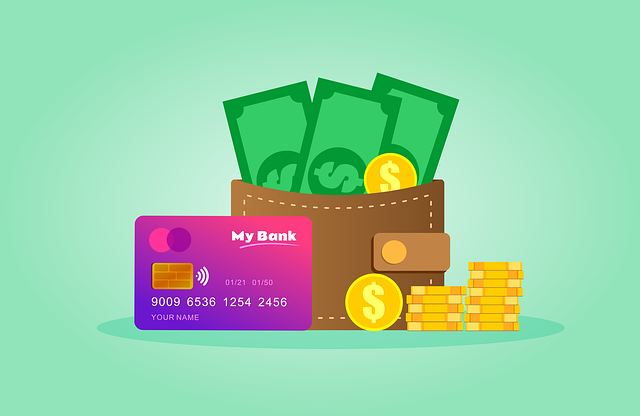Managing multiple credit cards with varying terms is complex, so consolidating them into a single loan can offer significant relief. This strategy saves money on interest rates and simplifies repayment with one due date and payment amount. Before consolidating, assess your financial situation, including debt burden, interest rates, and budget. You can consolidate through unsecured personal loans, secured consolidation loans, or third-party debt management plans. After consolidation, create a realistic budget, prioritize payments beyond minimums, and use tools to track spending while reviewing your strategy regularly for responsible borrowing.
Tired of juggling multiple credit cards with high-interest rates? Merging your debt into a single loan could be the solution. This comprehensive guide explores how consolidating your credit card debt can simplify financial management and save you money. We’ll delve into the drawbacks of multiple cards, the advantages of consolidation, evaluating your eligibility, various loan types, and a step-by-step application process. Learn how to take control of your finances and effectively manage your loan post-consolidation.
- Understanding Multiple Credit Cards and Their Drawbacks
- Benefits of Consolidating Debt Into One Loan
- Evaluating Your Financial Situation for Loan Eligibility
- Exploring Different Types of Consolidation Loans
- The Application Process: Step-by-Step Guide
- Strategies for Effective Loan Management After Consolidation
Understanding Multiple Credit Cards and Their Drawbacks

Many individuals find themselves managing multiple credit cards, each with its own set of terms, interest rates, and minimum payment requirements. While this might seem convenient, it often leads to a complex financial landscape. The allure of separate credit cards can be attributed to their specific benefits—like rewards programs or introductory zero-interest periods—but the drawbacks mount when it comes to tracking multiple due dates and managing diverse interest charges. This fragmented approach to debt can hinder financial progress, making it challenging to gain control over one’s finances.
When debts are scattered across various cards, consolidating them into a single loan becomes an attractive strategy for debt relief. By merging multiple credit cards into one loan, individuals simplify their financial obligations. This process allows them to focus on repaying a single, consolidated debt with potentially lower overall interest rates, thus saving money in the long run and offering better management of their finances.
Benefits of Consolidating Debt Into One Loan

Consolidating your debt into one loan offers numerous advantages for managing your finances effectively. By merging multiple credit cards or loans, you simplify your repayment process and potentially reduce overall interest expenses. This strategy can make it easier to keep track of your payments, as there’s only one due date and payment amount to remember. Additionally, a consolidated loan may provide better borrowing terms, such as a lower interest rate, which can save you money in the long run.
It also streamlines the process of paying down your debt. With all your debts under one roof, you can allocate your budget more efficiently, focusing on clearing the loan faster. This approach can help improve your credit score over time, as timely repayment and reduced debt levels are favorable factors considered in calculating creditworthiness.
Evaluating Your Financial Situation for Loan Eligibility

Before merging multiple credit cards into one loan, it’s crucial to evaluate your financial situation and determine your eligibility for a consolidation loan. Start by assessing your current debt burden—the total amount owed on all your credit cards. This includes understanding interest rates, minimum payment requirements, and any fees associated with each card. A key factor in loan eligibility is your credit score; a higher score typically means better loan terms and lower interest rates.
Reviewing your budget is also essential. Analyze your monthly income and expenses to gauge how much you can realistically afford to pay towards a consolidated loan. This step will help you choose the right loan amount that allows for manageable payments while still covering your necessary expenditures. Remember, consolidating debt into one loan is about simplifying your financial obligations, but it requires careful planning and an honest assessment of your financial health.
Exploring Different Types of Consolidation Loans

When considering a way to merge multiple credit cards into one loan, consolidation is a popular option. This process involves taking out a new loan to pay off existing debts, streamlining multiple payments into a single, more manageable one. There are several types of consolidation loans available, each with its own features and benefits.
Unsecured personal loans are a common choice for debt consolidation as they offer relatively low interest rates and flexible repayment terms. However, these loans rely on your creditworthiness and don’t require collateral. On the other hand, secured consolidation loans use an asset like your home or car as collateral, potentially offering lower interest rates but carrying the risk of losing the asset if you default. Some people also opt for debt management plans, which involve working with a third-party organization to negotiate lower interest rates and payment terms with your creditors rather than taking out a new loan.
The Application Process: Step-by-Step Guide

The Application Process: Step-by-Step Guide
To merge multiple credit cards into one loan, also known as consolidating debt into a single loan, start by gathering your financial information. This includes details of each credit card, such as balances, interest rates, and payment history. Next, research lenders who offer debt consolidation loans. Compare their terms, interest rates, fees, and repayment options to find the best fit for your situation.
Once you’ve identified a suitable lender, prepare your application documents. These typically include proof of identity, income statements, and sometimes employment verification. Fill out the application form accurately, providing all necessary details about your current financial status. Be transparent about your debt, as this will impact the loan terms offered to you. After submitting the application, wait for approval. The lender will review your information and assess your eligibility based on factors like credit score, income, and debt-to-income ratio. If approved, you’ll receive loan details outlining the new interest rate, repayment schedule, and any associated fees.
Strategies for Effective Loan Management After Consolidation

After consolidating multiple credit cards into one loan, effective debt management becomes crucial. The first step is to create and stick to a realistic budget that accounts for your consolidated loan payments alongside other essential expenses. Prioritize making more than the minimum payments on your new loan to reduce interest charges and pay off the debt faster. Utilize tools like budgeting apps or spreadsheets to track spending and ensure every dollar is allocated wisely.
Additionally, consider strategies like the debt snowball method, where you focus on paying off smaller debts first while making minimums on larger ones, or the debt avalanche method, which prioritizes clearing high-interest debts first. Regularly reviewing your financial situation and adjusting your strategy as needed will help maintain momentum and foster responsible borrowing habits.















